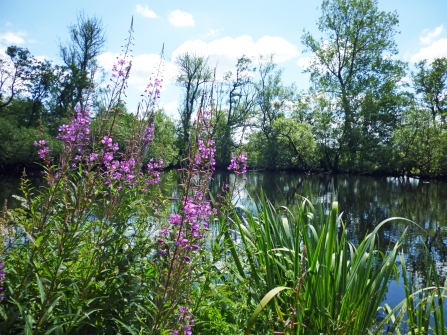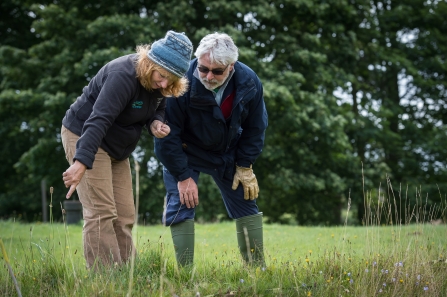Protecting something special
The Trust's Wildlife Sites team seeks to discover, monitor and arrange appropriate conservation management for Local Wildlife Sites within Staffordshire.
What are Local Wildlife Sites?
Local Wildlife Sites (LWS) are areas with locally significant nature conservation value. They come in all shapes and sizes, from small wildflower meadows and secluded ponds to ancient woodlands. Most are owned by private individuals.
Local Wildlife Sites are an essential part of creating a connected landscape of wildlife buffers, corridors and stepping stones so that the countryside is more resilient to the pressures of modern living and climate change.
LWS play a critical conservation role by providing wildlife refuges, protecting threatened species and habitats, and acting as links and corridors between nationally designated sites such as nature reserves and SSSIs.

The Trust's Role
The job of the Trust's Wildlife Sites team is to discover, monitor and try to secure appropriate conservation management for LWS. The team's survey work involves botanical fieldwork and takes place during the summer, when plants flower and identification can be most confident.
Once surveyed, sites are graded using mainly habitat-based designation criteria. This selection criteria is supported by Staffordshire Local Sites Partnership, and is in an ongoing process of refinement as more information is gained about the natural world in Staffordshire.
If a site meets certain criteria, it can be designated as a Local Wildlife Site. While the LWS designation does not offer any statutory protection, it must be taken into account by planning authorities if an application is made to develop the land.
The team aims to resurvey every Local Wildlife Site within the county once every 10 years, enabling them to monitor any changes in biodiversity on the sites.
You can find out more about our work with Staffordshire Ecological Record regarding Local Wildlife Sites here

Credit: Matthew Roberts
Ensuring Local Wildlife Sites are protected
Another important aspect of the team's work is to work with the landowners of Local Wildlife Sites to make sure they are looked after in an environmentally-sensitive way. For example, the team supports landowners in applying for environmental stewardship schemes. These are schemes ran by Natural England which offer financial incentives in return for managing the land in an environmentally-friendly way.

